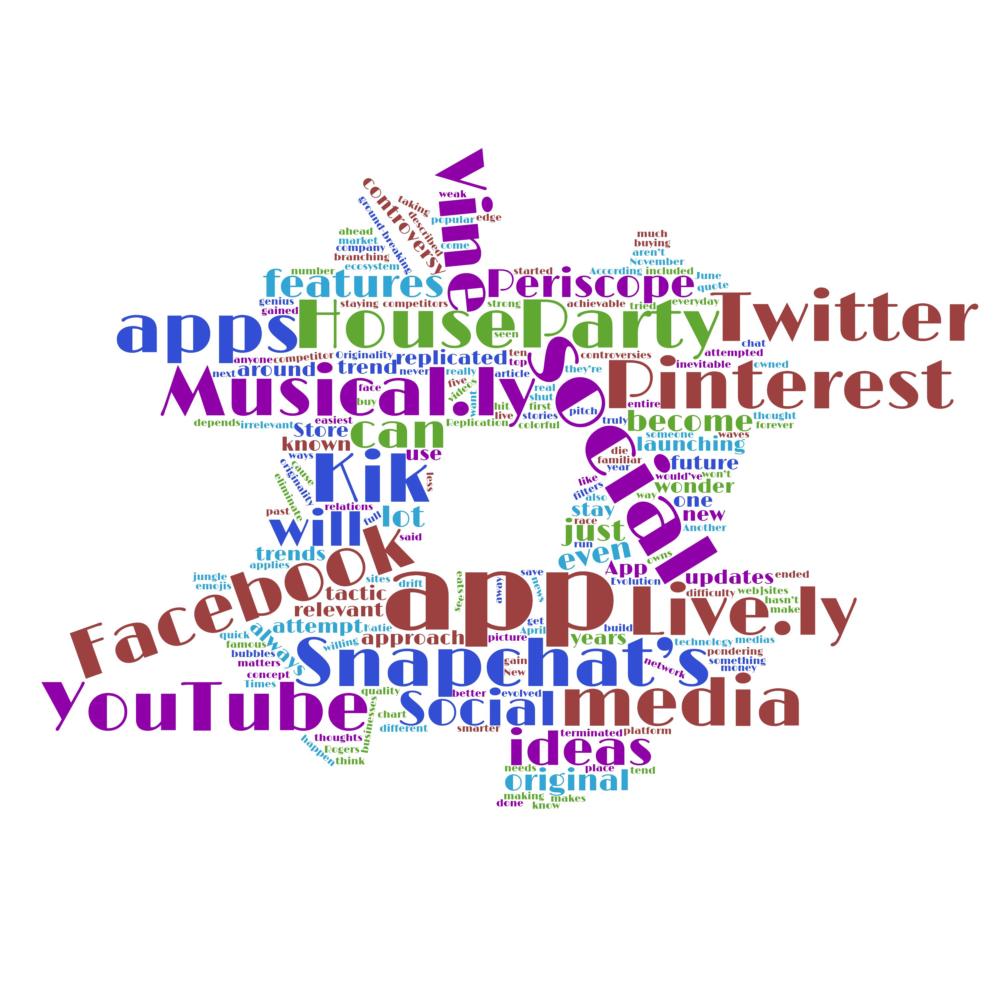Social Media, Where The Strong Eat The Weak
October 6, 2017
Social media platforms — Instagram, Snapchat, Twitter, Musical.ly, HouseParty, Airtime, Periscope, YouTube, Pinterest, Tumblr, Kik, Vine, Facebook, and even MySpace — are the easiest ways to become known, famous, and relevant today. People use these apps every day to build their own networks and social relations, and the apps they choose dictate which companies will thrive and which will die.
According to Katie Rogers in a 2016 “New York Times” article about Vine, “If you picture social media as a colorful ecosystem full of emojis and chat bubbles, you really should think of it as a jungle, a place where the strong eat the weak.”
Social media platforms aren’t just platforms, they’re businesses, and these businesses have competitors. Like any business, they frequently attempt to buy out competitors to eliminate or reduce competition. This is what happened in October 2017 when Twitter revealed its intention to acquire Vine, which was trending. Their intention was to disable users’ ability to post more vines, but ultimately they just turned the app into an archive.
Despite the demise of Vine, the stars of the app branched out and gained even more popularity on other platforms. For example, famous Viners such as Jake Paul, Logan Paul, and Cameron Dallas all moved into YouTube and gained even more followers than they initially had on Vine.
The business approach of buying out the competitor was attempted in a different way in 2012 when Facebook paid $1 billion to buy Instagram.
Another business approach social platforms attempt is broadening their apps. Musical.ly tried this tactic and ended up launching their app Livel.y in June 2016. Likewise, from November 2016 to April 2017, Instagram started launching updates that included face filters, stories, and live videos, all features available in Live.ly and Periscope. There has also been a lot of controversy around Instagram copying Snapchat’s features.
The real controversy is the concept of “new ideas,” making something that hasn’t been seen or done before. Originality is the entire market of social media. It is possible to make an app with social features and have the app hit number one on the App Store chart; the difficulty is staying in the top five of the App Store. To do that and stay relevant, an app needs to have updates and an edge of originality, features other people haven’t thought of. And if they’re replicated better, people won’t want to use the original app as much. Replication does happen, but with platforms like Instagram, the quality matters. These “controversies” cause people to wonder how original any app can truly be.
The Demon Tattler surveyed nearly 300 students about their favorite social media apps. Here are the results:
Snapchat- 49%
Instagram- 18%
Facebook- 16%
Pinterest- 5%
Reddit- 4%
Tumblr- 3%
Twitter- 3%
Vine- 2%
Periscope- 0%
WhatsApp- 0%
We also asked students how important it is for them to receive likes on their posts, on a scale of 1 (“Don’t really care”) to 10 (“Nothing else matters”). Here are the results:
1- 43%
2- 7%
3- 6%
4- 4%
5- 14%
6- 6%
7- 7%
8- 4%
9- 0%
10- 6%
All of these social media platforms are in competition with each other, angling for how to get ahead of the trends before they even become trends, racing to see who makes it to the next ground-breaking trend first. “Forbes” magazine Anthony DiMoro said, “Social media can be the catalyst for success by empowering people and fueling ideas. We have all seen the good and the bad that can come from social media…. There is no denying the impact that social media has had on both our culture and on industries around the world.”


